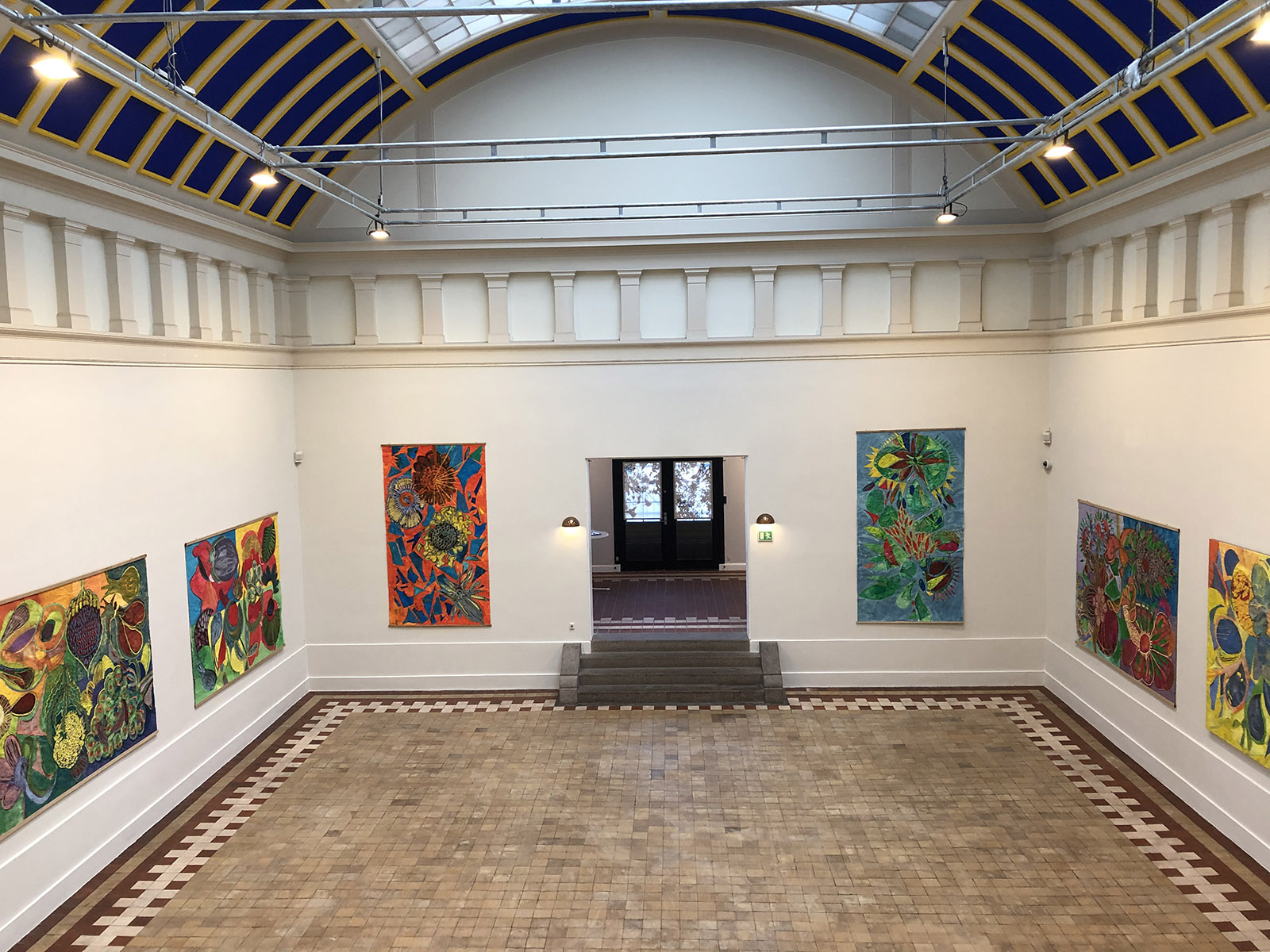
Take a Walk in the Park
Maria Dubin at the Funen Art Academy, Odense, Denmark.
By Mai Misfeldt, art critic “Kristeligt Dagblad” - Translated from Danish by Roberta Kettel
WITHIN THE EXHIBITION’S TITLE “TAKE A WALK IN THE PARK” lies an invitation to explore the works on show. The expression “A Walk in the Park” implies an easy rather than challenging experience, but I believe that Maria Dubin wants us to spend more time wandering in the park, so that by slowing down we can experience the beauty, enjoyment and lightness of spirit to be found there. When you go for a walk in the park, there should be time to stop, even to lie down and look up at the flowering corollas, close your eyes for a while, open them again and contemplate a leaf, slowly spiralling down from an Autumn branch.
In the Summer of 2019 Maria Dubin was in residence at the guest studios of the Holluf-gaard Park Art Centre. She arrived one Sunday evening – it was hot and she had had a long drive from Rotterdam, where she had taken her son to the Kooning Academy. The key was hidden under a stone, as arranged, and she needed to find somewhere to eat. But first she wanted to see the park, and get some fresh air. As she walked past a bonfire site she spot-ted a group of 10-15 young Arabs grilling Merguez sausages over the fire. She stopped to say hello, and was invited to join them. The young men were celebrating the completion of their Koranic studies, and were happy that Maria Dubin was familiar with their various dishes, and could speak a little bit Arabic after many years living in Tunisia. Early the next morning she began working on the pictures that would become “Take a Walk in the Park”.
This story is typical of Maria Dubin. She is a person who meets the world without reservati-on or duplicity. Meeting Maria Dubin is a happy and positive experience because you can sen-se her genuine curiosity and interest. Radiating such warmth, she receives as much in return.
Of course you cannot necessarily correlate a person’s character to their art, but nevertheless I see Maria Dubin’s work borne aloft by the joie de vivre which characterizes her personality. In her new works she has reached the top notes of the musical scale, and they are suffused with a joyous and musical colour and energy; a symphony of repeating themes and motifs.
The decoupage works, which are both cut and painted, are the result of an earlier pro-ject “Karen Blixen’s Flowers”. These were a series of black and white drawings in Indian ink, done quickly and intuitively after contemplative meditation on individual flowers in the park of Karen Blixen’s former country estate (now a museum “Rungstedlund”). In her new works Maria Dubin has cut up some of these drawings, coloured them, and joined them together on the canvass with new drawings from the Hollufgaard Park. Coordinated art, where an earlier project becomes the driving force of a new.
In the colourful exhibition rooms these drawings have been set free, and leaves and seed capsules have separated from their stems to form voluminous shapes and patterns. Red oil paint gives strength to the poppy’s delicate leaves. The decoupage works are approaching the abstract though it is still apparent that they are based on reality. The freedom of expression in Maria Dubin’s work has come from long and patient studies of the plants and flowers at Rungstedlund and Hollufgaard Park.
The works form a cycle of growth and decline from the soft delicate seed to the dried seed capsule. The large brown head of the sun flower nods on its dried stalk, but it is also a twink-ling star where each seed has its place in “Fibonacci’s sequence”. There is so much potential energy in these pictures, needed not just for flowering but also when the plant withers and the seeds fall to the ground. Maria Dubin has been energized by her walks in the park, and she now opens the park for you, the spectator, with a generous invitation to come inside – or rather outside. Take a walk